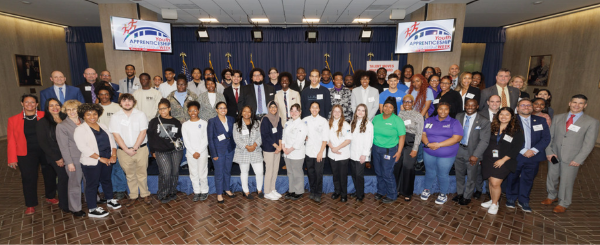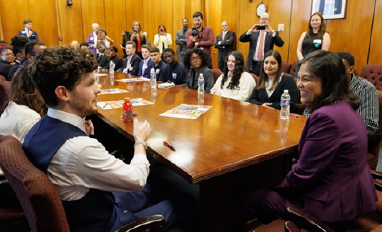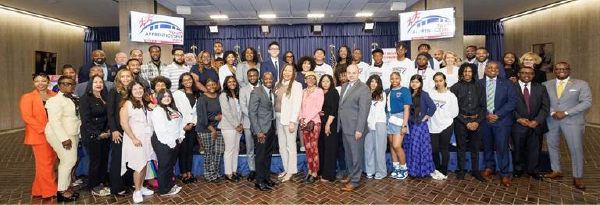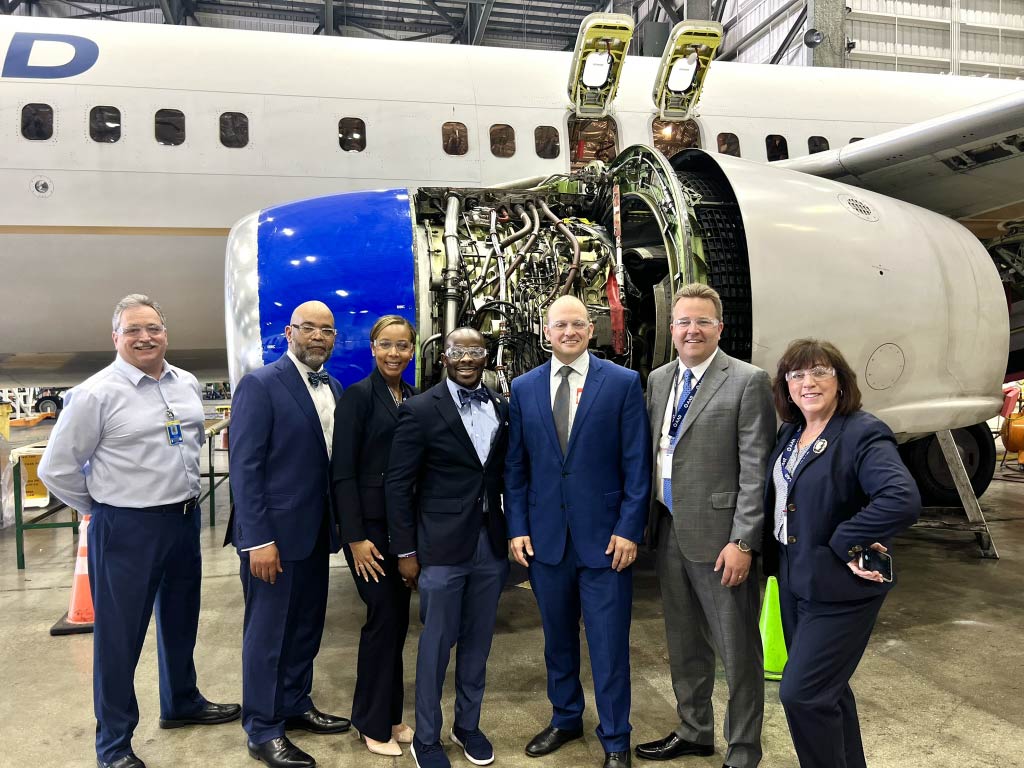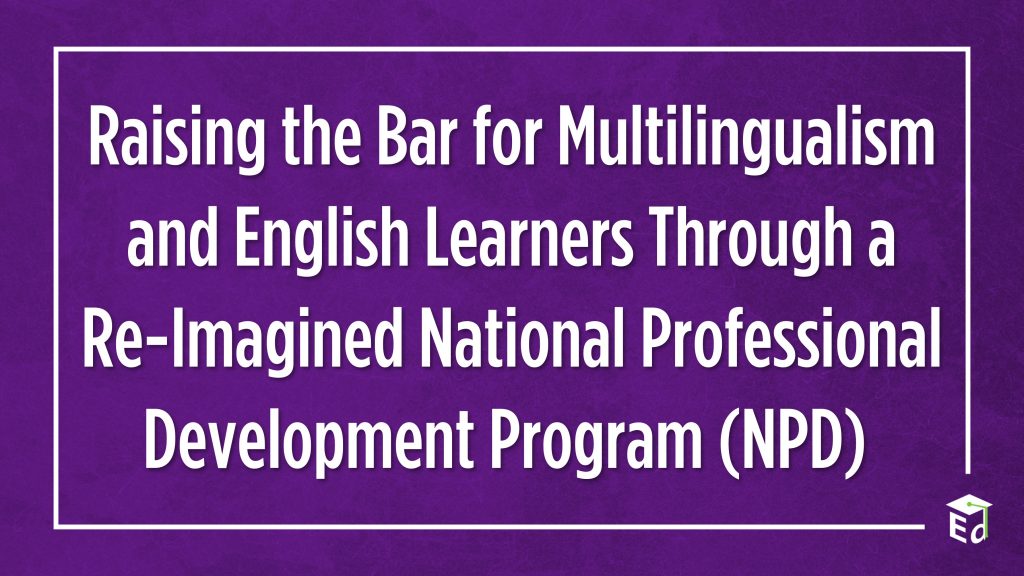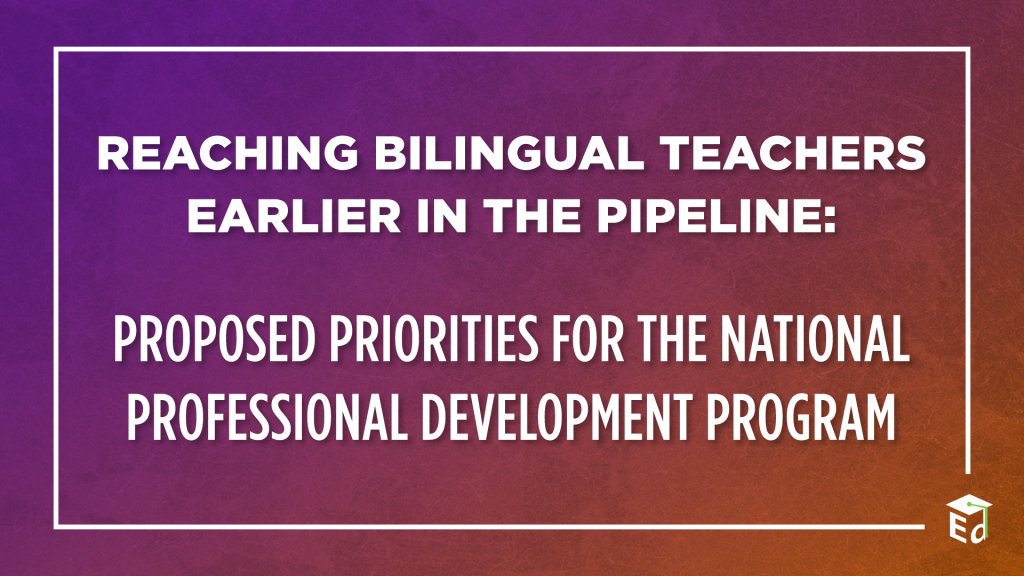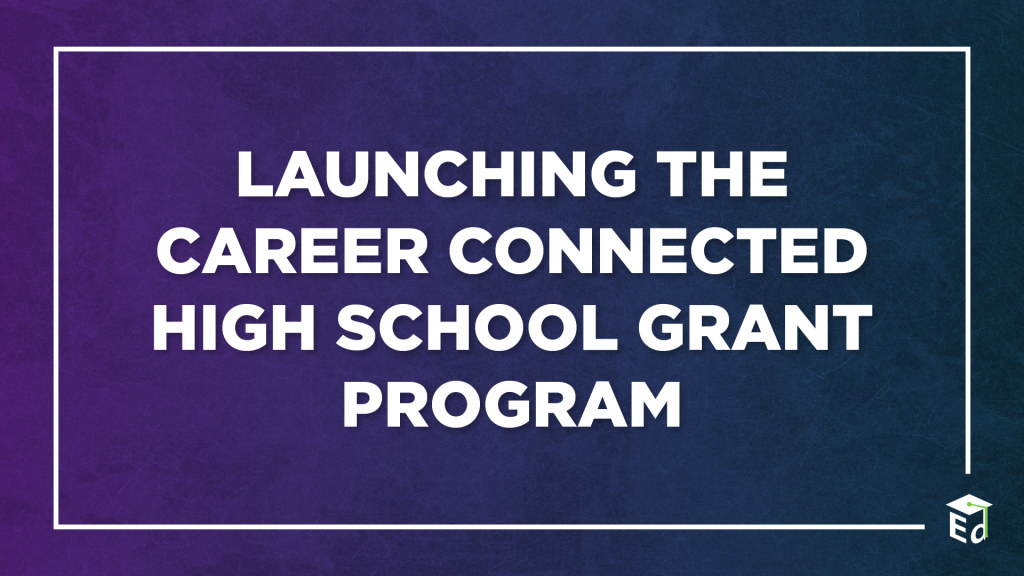This was crossposted from the National Center for Education Evaluation and Regional Assistance blog.
The United States is facing a chronic absenteeism crisis. Over 14 million students nationwide during the 2021–22 school year were chronically absent. This means that they missed at least 10 percent of school days—equivalent to approximately 18 days in the year. Missing this much instructional time creates significant learning challenges for students and adversely affects student wellbeing. School systems across the nation are looking for ways to address this crisis and the accompanying problems it presents.
IES has created four handouts that discuss research findings and research-based tools from across IES that educators and policymakers can use to improve student attendance and engagement:
These resources from IES can help educators and policymakers consider different research-based approaches to improving student engagement and attendance. They include ways to partner with families, promote a positive and safe learning environment, use data and early warning systems, and apply cycles of evidence-based continuous improvement. Before selecting any particular strategy to address chronic absenteeism, we recommend all educators consult Applying a Cycle of Evidence-Based Continuous Improvement when Selecting Interventions and Project Components to Improve Attendance. Educators can also go to the REL program page on the IES website to learn more about the program and search for other REL products and resources.
We hope you find these resources helpful. Please send any feedback or questions you may have to [email protected].
Text Messaging with Families to Support Student Attendance

Findings from IES-funded research suggest that text messaging can be effective in reducing rates of chronic absenteeism.
What is the text messaging practice?
As schools and districts work to decrease chronic absenteeism rates, text messaging has emerged as an evidence-based practice to increase engagement with families and support their efforts to get students to school regularly. It involves schools sending messages to parents or guardians informing them of their child’s attendance record and encouraging them to get the child back in school. The text messages can include many different messages, discussed below, but generally the approach is to let families know how many total days students have missed. Additionally, the texts often have a message about how important school attendance is and where families can turn to for support if there is an issue that the school should be aware of, such as chronic health challenges or transportation issues. These texts aim to engage families and have them partner with schools to increase attendance.
How easy is it for schools to adopt this practice?
Text messaging is a low-cost practice that districts can adopt to encourage family engagement. The Institute of Education Sciences (IES) at the U.S. Department of Education developed a toolkit that provides information on how districts can develop their own text messaging approach. The toolkit encourages districts to form an attendance team to determine the priorities of the text messaging approach and then to develop the system that can be automated and easily implemented. The toolkit provides guidance to districts on how to incorporate existing student information systems to develop the texts.
What are the different types of text messaging?
IES’s evaluation of the text messaging strategy involved different types of text messaging to determine if certain features improved attendance.[1] The “basic” texts involved a weekly message every Sunday to families about how important attendance is and different ways to overcome potential challenges to attendance. In addition, schools sent automated same-day texts when a child missed a day of school, which were personalized to include the student’s name and the total number of days the student had been absent that school year. These basic texts can be framed to emphasize the benefits of attending school (i.e., “Going to school every day can help [the child’s name] learn math and reading.”) or the consequences of missing school (i.e., “Children who miss 2 or more days a month starting in elementary school are less likely to graduate from high school.”)
The IES evaluation also included “intensified texts,” which were targeted to families of students who had already missed many school days, despite receiving the basic texts in the previous school semester. These texts either consisted of school staff reaching out directly to families to increase family engagement and to provide individualized support, or an automated text message asking families to set goals for their child to attend school every day in the upcoming school week.
How effective is the text messaging practice at improving attendance?
The evaluation study by IES found that, regardless of the type or framing of text messaging used by the district, the percent of students who were identified as chronically absent decreased by 12 to 18 percent when schools implemented the text messaging strategy. On average, basic text messaging was sufficient to increase overall attendance in schools. Among students with a prior history of chronic absenteeism, intensified text messages further decreased the chronic absenteeism rate. Thus, schools might benefit by implementing a basic text messaging strategy for all students and targeting students with records of chronic absenteeism to receive the intensive texts. Since the effectiveness did not vary by framing or approach, districts and schools can identify a strategy that meshes with their school mission and approach.
Where can I learn more about how to implement text messaging?
The IES toolkit on using text messaging provides step-by-step information on how districts and schools can adopt and implement the text messaging strategy to support their families and students. The toolkit contains strategies for both the leadership team as well as the IT team developing the text messaging system using the student information system that the district already uses. This toolkit also contains many examples of different versions of texts that the district can employ, based on the age of students, how frequently the district decides to send text messages, and the framing the district decides to use.
Resources
Heppen, J.B., Kurki, A., & Brown, S. (2020). Can texting parents improve attendance in elementary school? A test of an adaptive message strategy (NCEE 2020-006). Washington, DC: U.S. Department of Education, Institute of Education Sciences, National Center for Education Evaluation and Regional Assistance. Retrieved from https://ies.ed.gov/ncee
Kurki, A., Heppen, J.B., & Brown, S. (2021). How to text message parents to reduce chronic absence using an evidence-based approach (NCEE 2022-001). Washington, DC: U.S. Department of Education, Institute of Education Sciences, National Center for Education Evaluation and Regional Assistance. Retrieved from https://ies.ed.gov/ncee
Using Data and Early Warning Systems to Improve Student Attendance and Engagement

Findings from IES-funded research suggest that early warning systems can help school systems improve student attendance:
- Early warning systems include attendance data that can help educators identify students who are chronically absent or at risk for becoming chronically absent. Educators can then tailor supports and interventions to the identified students in order to improve engagement and attendance. See these studies by Regional Educational Laboratories (RELs) or a grantee of the National Center for Education Research (NCER) for the evidence on these systems:
To learn more about designing and implementing an early warning system:
- Read the Forum Guide to Early Warning Systems (2018) published by the National Forum on Education Statistics. The guide provides information and best practices to help education agencies plan, develop, implement, and use an early warning system in their agency to inform interventions that improve student outcomes. The document includes a review of early warning systems and their use in education agencies and explains the role of early warning indicators, quality data, and analytical models in early warning systems. It also describes how to adopt an effective system planning process and recommends best practices for early warning system development, implementation, and use. The document highlights seven case studies from state and local education agencies who have implemented, or are in the process of implementing, an early warning system.
- Read the transcript and accompanying materials from the REL webinar, Using Attendance Data for Decisionmaking: Strategies for State and Local Education Agencies (2018, REL West). The webinar includes a discussion about the Forum Guide to Early Warning Systems and Attendance Works’ Key Ingredients for Systemic Change. Presenters Sue Fothergill (Attendance Works) and Laura Hansen (Metro Nashville Public Schools) share highlights from their work conducting “deep dives” into student attendance data, including understanding the reasons that students are absent and building effective interventions to directly address them. They will discuss the importance of accurately tracking student attendance data and how it can be used to make decisions in policy and practice that will support students who are chronically absent get back on track with their attendance.
- Watch the State Longitudinal Data System (SLDS) program’s webinar, Supporting LEA Early Warning Systems with SEA Support and Infrastructure, (2023, SLDS). This webinar includes presentations by representatives from three State Education Agencies about the SEA role in supporting LEA early warning systems.
- Watch the REL webinar, Connecting with Parents about Early Warning Systems (2016, REL Midwest). This webinar is intended for a state education agency audience and discusses strategies for communicating with parents about early warning systems.
- Read the REL report, Using Data from Schools and Child Welfare Agencies to Predict Near-Term Academic Risks (REL Mid-Atlantic, 2020) to learn about an approach for developing a model that predicts near-term academic problems such as absenteeism, suspensions, poor grades, and low performance on state tests. The report provides information for administrators, researchers, and student support staff in local education agencies who are interested in identifying students who are likely to have near-term academic problems such as absenteeism, suspensions, poor grades, and low performance on state tests. The report describes an approach for developing a predictive model and assesses how well the model identifies at-risk students using data from two local education agencies. It also examines which types of predictors–in-school variables (performance, behavior, and consequences) and out-of-school variables (human services involvement and public benefit receipt)–are individually related to each type of near-term academic problem to better understand why the model might flag students as at risk and how best to support these students. The study finds that predictive models using machine learning algorithms identify at-risk students with moderate to high accuracy.
- Read the REL report, Comparing methodologies for developing an early warning system (REL Southeast, 2015). The purpose of this report was to explicate the use of logistic regression and classification and regression tree (CART) analysis in the development of early warning systems. It was motivated by state education leaders’ interest in maintaining high classification accuracy while simultaneously improving practitioner understanding of the rules by which students are identified as at-risk or not at-risk readers.
Partnering with Families to Support Student Attendance and Learning

Resources from the Regional Educational Laboratory (REL) Program
Schools and districts can use the following REL tools and resources to support family engagement broadly:
- Toolkit of Resources for Engaging Families and the Community as Partners in Education (REL Pacific, 2016) The Toolkit of Resources for Engaging Families and the Community as Partners in Education is a four-part resource that brings together research, promising practices, and useful tools and resources to guide educators in strengthening partnerships with families and community members to support student learning. The toolkit defines family and community engagement as an overarching approach to support family well-being, strong parent-child relationships, and students’ ongoing learning and development. The primary audiences for this toolkit are administrators, teachers, teacher leaders, and trainers in diverse schools and districts.
- Pillars for Family Engagement: Foundation for Meaningful & Equitable School & Family Partnerships (REL Mid-Atlantic, 2021) This video highlights a research-based family engagement framework that identifies practices that are meaningful for schools in Delaware. The goal is to help support school districts in adopting and implementing research-based family engagement practices.
- Go-Learn-Grow Toolkit: Improving the School Attendance of New Jersey’s Youngest Learners (REL Mid-Atlantic, 2019) New Jersey Department of Education and REL Mid-Atlantic created this toolkit of simple, easy-to-use resources and handouts to support districts, schools, and early childhood providers in improving school attendance in pre-kindergarten and kindergarten. The goals of these materials are to: help educators and families understand the importance of attendance in the early grades; encourage schools to gather and include data on preschool students when reporting chronic absenteeism rates on school report cards; help schools collect information from families to help identify reasons for absenteeism in the early grades; and provide guidance on selecting and implementing research-based strategies to improve attendance in pre-kindergarten and kindergarten, based on the identified challenges.
Other REL tools and resources can support family engagement with specific types of academic content:
- Community Math Night Facilitators’ Toolkit (REL Appalachia, 2021) Mastery of early math concepts is associated with such later achievements as middle school grades, high school graduation, and career opportunities (Garcia & Weiss, 2017). Given the importance of early math, REL Appalachia created the Community Math Night Facilitators’ Toolkit as a detailed resource for K–5 elementary school educators to plan and implement a Community Math Night event. Community Math Nights use research-based, interactive math activities to engage families in building positive math attitudes, facilitate their participation in children’s math learning, and build a community of educators, students, families, and other caring adults to support students. This toolkit includes planning and organizational resources, step-by-step instructions, and printable materials for the interactive math activities, as well as a workbook that can be used as a professional learning resource on key math-learning research findings and how to apply them in practice.
- Teacher’s Guide to Supporting Family Involvement in Foundational Reading Skills This is a companion to the What Works Clearinghouse (WWC) practice guide, “Foundational Skills to Support Reading for Understanding in Kindergarten through 3rd Grade.” This guide is organized according to the four recommendations and how-to steps from the WWC practice guide. The activities follow the typical developmental progression through which students learn to read. While teachers may use the guide sequentially, the activities are designed to be used flexibly. Teachers can select activities to share with families based on each student’s instructional needs.
Promoting a Positive School Climate and Safe Learning Conditions

All students should be afforded safe, supportive, and fair learning environments. Reducing exclusionary discipline actions is one strategy leaders may seek to use in service of that larger goal. Schools and districts can use the following REL tools and resources to support more equitable and less punitive discipline practices.
Two REL tools to support schools and districts with analyzing disciplinary data:
- School discipline data indicators: A guide for districts and schools (REL Northwest, 2017) This guide is designed to supply educators with a means to identify whether disproportionality in discipline practice across different student groups—such as those informed by gender, race/ethnicity, or disability status—exists in their schools or districts. It also aims to help educators use data to reduce disproportionality in suspensions and expulsions.
- Analyzing student-level disciplinary data: A guide for districts (REL Northeast & Islands, 2017) This guide provides information on how to conduct such an examination and explores differences in student academic outcomes across the types of disciplinary actions that students receive. It serves as a blueprint to assist districts with designing and carrying out their own analyses and engaging with external researchers who are doing the same.
One REL resource supports using that data to improve discipline policies:
- Using Data to Promote Equity in School Discipline (REL Northwest, 2019) REL Northwest developed this training series to help schools and districts improve their school discipline policies and practices. The series provides resources to help school and district teams use data to identify areas of concern related to the overuse of exclusionary discipline or disproportionality in assigning discipline to student groups, such as students of color or students with disabilities. The training series also helps teams use evidence to identify interventions, develop an action plan, track their effectiveness, and inform improvement decisions.
The following REL resources can be used to support schools and districts with improving school climate.
- Shifting the Current School Climate: Sense of Belonging and Social and Emotional Learning (REL Northwest, 2018) The purpose of this infographic was to describe both schoolwide and classroom-level actions that adults can take to foster a positive environment that supports a sense of belonging.
- Connecting Social and Emotional Learning, School Climate, and Student Voice (REL Pacific, 2020) Strategies to promote social and emotional learning (SEL), school climate, and student voice have been connected with improvements in student academic achievement, well-being, and college and career readiness. Check out this infographic to learn more.
- Welcoming, Registering, and Supporting Newcomer Students: A Toolkit for Educators of Immigrant and Refugee Students in Secondary Schools (REL Pacific, 2021) This resource toolkit is intended to help educators and other stakeholders identify and use research-based practices, policies, and procedures for welcoming, registering, and supporting newcomer immigrant and refugee students who are attending secondary schools (grades 6-12) in the United States. Resources include professional development curricula, policy and implementation guides, evaluation reports, and sample surveys and assessments.
Check out these REL resources on trauma and student mental health.
This blog was produced by Casey Archer ([email protected]), education research scientist and contracting officer’s representative for the WWC program; Liz Eisner ([email protected]), associate commissioner for NCEE’s Knowledge Use Division; and Janelle Sands, ([email protected]), research analyst and contracting officer’s representative for the REL program.
[1] The study was conducted using 26,843 elementary school students during the 2017-2018 school year, prior to the COVID-19 pandemic. While absenteeism rates have increased nationally post-pandemic, the practice may still help schools to increase family engagement and encourage student attendance.

